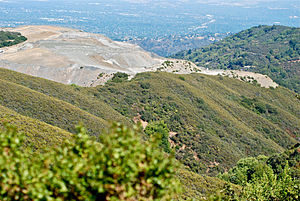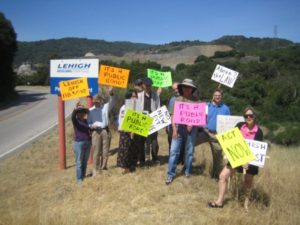Court of Appeal Upholds Mine’s Vested Right
Court of Appeal Upholds Santa Clara County’s Finding of Mine’s Legal Nonconforming Use Status
In No Toxic Air, Inc. v. Santa Clara County, California’s Court of Appeal for the Sixth District upheld Santa Clara County’s finding that a mine in operation since 1903 was properly deemed a legal, nonconforming use.
Lehigh Southwest Cement Company and Hanson Permanente Cement (collectively “Lehigh”) are the successors-in-interest to the Permanent Quarry in Santa Clara County. The Permanent Quarry has been in operation long before the County began requiring permits for surface mining operations in 1948. In 2011, Lehigh sought a formal declaration from the County that the Permanent Quarry was a legal nonconforming use (i.e., Lehigh had a vested right to continue its operations), which the County granted.
No Toxic Air, Inc., a non-profit organization, challenged the County’s determination. After the trial court denied the petition, No Toxic Air appealed, claiming that 1) the trial court erroneously used the “substantial evidence” standard of review instead of the “independent review” standard of review, 2) there was not substantial evidence to support the County’s determination, and 3) the County’s findings were not specific enough.
The Court of Appeal rejected all of No Toxic Air’s claims.
First, the “independent review” standard of review is only available when the challenger’s own vested rights are implicated. Here, No Toxic Air has no vested right implicated in the challenge, and cannot assert the existence of Lehigh’s vested right to justify the more favorable standard of review.
The Court then held that there was substantial evidence in support of the Permanent Quarry’s vested rights status, even though the Permanent Quarry has regularly expanded in size since its inception. The Court first restated the law on nonconforming uses, particularly as it relates to mining operations. The diminishing assets doctrine recognizes that many mining projects occur incrementally, and mining operators often intend to expand the operation. As such, it is generally held that a mine’s entire tract is considered an existing nonconforming use if there is evidence of the mining operator’s intent to expand – even if the entire tract is not so used at the time of a new law’s effective date. The Court used this reasoning to reject No Toxic Air’s argument that the Permanent Quarry was not active on certain parcels, and those parcels are thus not legally nonconforming. The diminishing assets doctrine applies to the mining operation overall, and the vested rights analysis may not be piecemealed to each component or parcel of a mine.
The Court also rejected No Toxic Air’s ancillary argument that a road within the Permanent Quarry was public, and was thus subject to a County ordinance banning excavation within 1000 feet of a public road. The County identified numerous pieces of evidence confirming that the road has been recognized as a private road, accessible only by the Permanent Quarry’s operators.
Lastly, the Court confirmed that the County’s findings were sufficiently specific, as the findings were replete with citations to specific evidence sufficient to “bridge the analytic gap between the raw evidence and ultimate decision.”
The case can be found here: 1 Cal. App. 5th 1136 (2016)


